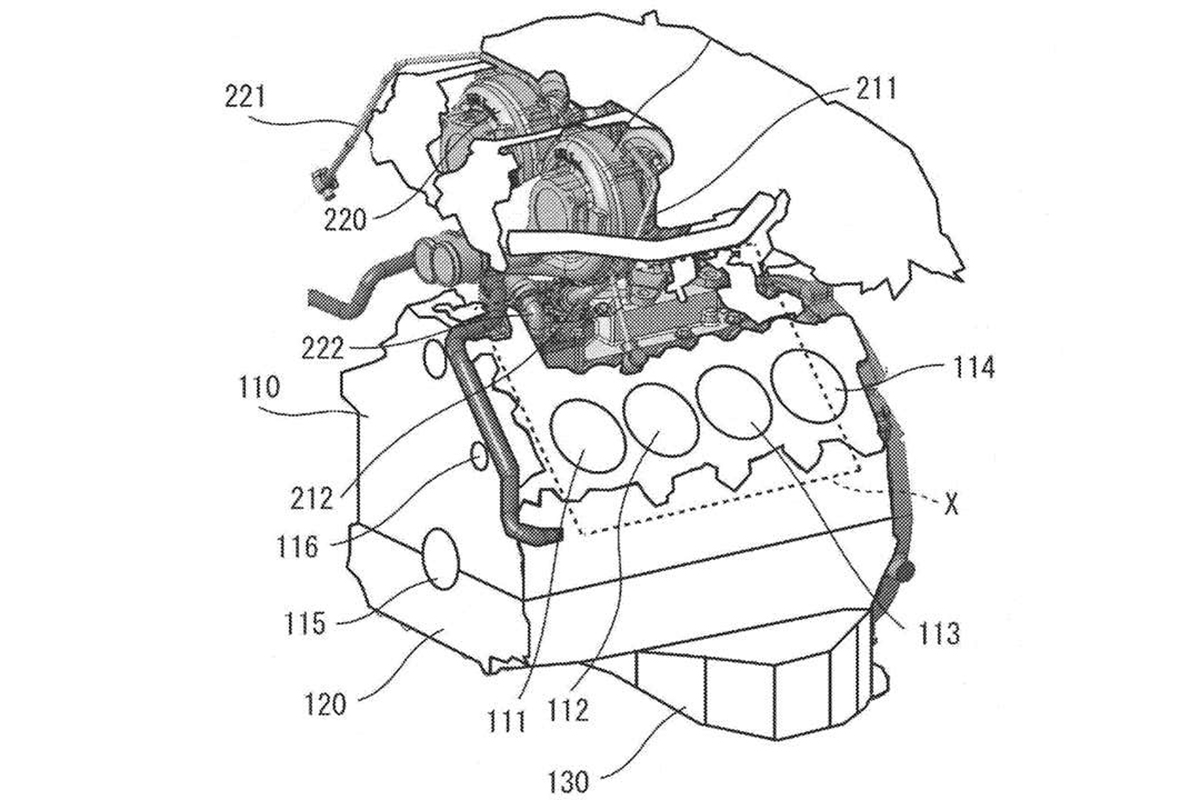A recent Toyota patent filing kicked off rounds of speculation late this week with depictions of a new “Hot V” V8 engine packing twin turbos sitting in the valley between the cylinder banks. After on-again, off-again rumors about Toyota’s V8 development, this seemed like the greatest clue yet that our dreams of a fire-breathing, turbocharged V8 might actually come true.
But is this really confirmation of a new turbocharged V8? Maybe not. As Lexus Enthusiast member and YouTuber Automotive Press explains, the patent is actually referring to the way that lubricants and other consumables flow through the engine — not a patent for a twin turbo V8 architecture itself. While the schematics in the patent drawing do show eight cylinders, and it’s still possible that such an engine could be in development, this specific patent does not explicitly give us proof that the engine exists.
Even if the patent does not give us proof of a V8, it mentions twin turbo, single turbo and V6 configurations, so it seems Toyota is certainly planning for a next generation of turbocharged engines… we might just have to wait for a while longer to see what it means for production vehicles.

